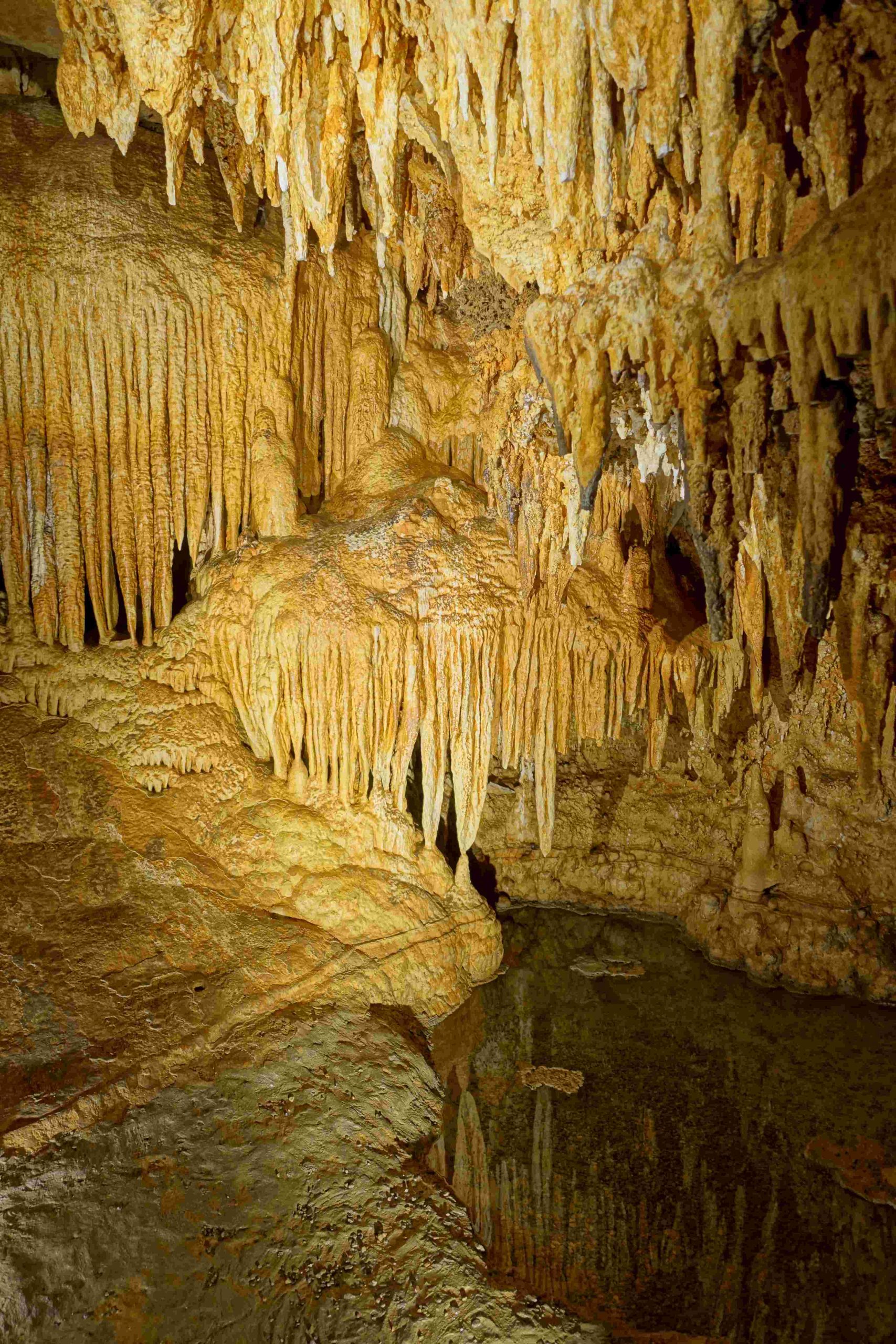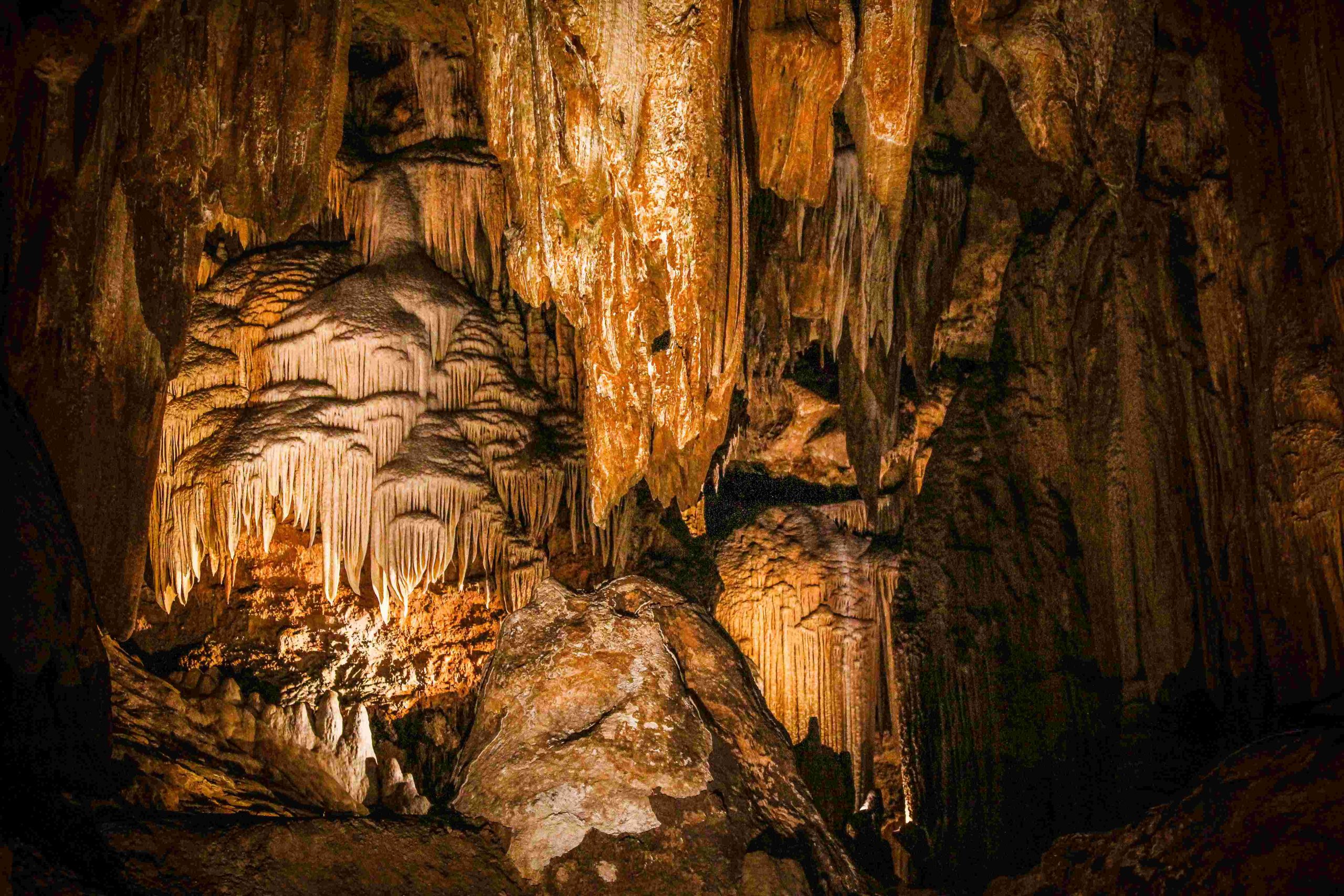Luray Caverns, located in Virginia’s Shenandoah Valley, is a remarkable natural formation that has captivated visitors for over a century. This underground wonder is the result of millions of years of geological processes, showcasing intricate formations and breathtaking chambers. The caverns’ natural origin, coupled with their historical significance and ongoing conservation efforts, make them a unique destination for both nature enthusiasts and casual tourists alike.
What is the Geological Origin of Luray Caverns?

Luray Caverns is indeed a natural formation, created through complex geological processes over millions of years. The caverns developed in dolomites of the lower Beekmantown Dolomite, dating back to the Lower Ordovician period, approximately 400 million years ago. The primary rock composition is limestone, rich in calcium carbonate.
The formation process began when the Shenandoah Valley was submerged under an inland sea. Over time, as rainwater, slightly acidic due to dissolved carbon dioxide and decaying vegetation, seeped through the soil and into the limestone, it gradually dissolved and eroded the rock. This process, known as carbonic acid dissolution, enlarged existing fissures and crevices, eventually creating the large limestone chambers we see today.
How Did the Caverns’ Unique Features Form?

The most striking features of Luray Caverns are its impressive geological formations, primarily stalactites and stalagmites. These formations result from the slow precipitation of calcium carbonate from water rich in carbon dioxide.
- Stalactites: These icicle-like formations hang from the ceiling of the caverns.
- Stalagmites: These pillar-like formations rise from the floor of the caverns.
The growth rate of these formations is remarkably slow, with new deposits accumulating at about one cubic inch every 120 years. This slow process has created thousands of intricate and diverse formations throughout the caverns.
Another notable feature is flowstone, which occurs when mineral-rich water flows over the walls and floors of the caverns, depositing layers of calcite. Flowstone can form cascades, columns, and other decorative features, adding to the caverns’ visual appeal.
What Makes Luray Caverns Unique Among Cave Systems?
Several factors contribute to the uniqueness of Luray Caverns:
-
Diverse Formations: The caverns boast an exceptional variety of speleothems (cave formations), including stalactites, stalagmites, columns, draperies, and flowstone.
-
Color Variations: The formations display various colors due to mineral impurities:
- Iron: Reds and yellows
- Manganese: Black
-
Copper compounds: Blues and greens
-
Historical Water Marks: Some formations show water marks and oscillation marks, providing insights into past water levels within the caverns.
-
The Great Stalacpipe Organ: This unique musical instrument uses stalactites to create melodious sounds, adding an auditory dimension to the visual spectacle.
-
Dream Lake: A shallow pool with a mirror-like surface that creates stunning reflections of the surrounding formations.
How Was Luray Caverns Discovered?
The discovery of Luray Caverns is an intriguing chapter in its history:
- Date of Discovery: August 13, 1878
- Discoverers: Andrew J. Campbell, William Campbell, John “Quint” Campbell, and Benton Stebbins
- Method of Discovery: The group entered the cavern through a sinkhole after several hours of digging
This accidental discovery led to the development of Luray Caverns as a tourist destination, despite some initial legal disputes over ownership.
What Conservation Efforts Protect Luray Caverns?
As a National Natural Landmark, Luray Caverns benefits from certain protections and recognition of its natural significance. While specific conservation programs are not detailed in the provided sources, several general preservation efforts are in place:
- Guided Tours: These help educate visitors about the importance of preserving the caverns’ natural state.
- Environmental Control: Maintaining a stable temperature of 54°F (12°C) is crucial for preserving the delicate formations.
- Visitor Impact Management: Controlling the number and behavior of visitors helps minimize human impact on the caverns’ ecosystem.
How Has Luray Caverns Impacted Local Tourism and Economy?
Since its discovery and subsequent development as a tourist attraction, Luray Caverns has become one of the most visited cave systems in the United States. This has had a significant impact on the local economy:
- Job Creation: The caverns provide employment opportunities in tourism, hospitality, and related services.
- Revenue Generation: Ticket sales, gift shops, and associated attractions contribute to the local economy.
- Indirect Economic Benefits: Increased tourism leads to growth in local businesses such as hotels, restaurants, and shops.
What Can Visitors Expect When Exploring Luray Caverns?
Visitors to Luray Caverns can expect a memorable experience:
- Guided Tours: Knowledgeable guides lead visitors through the caverns, explaining the geological processes and pointing out notable formations.
- Comfortable Environment: The caverns maintain a constant temperature of 54°F (12°C) year-round, making it a pleasant destination in all seasons.
- Unique Attractions: Besides the natural formations, visitors can experience the Great Stalacpipe Organ and see the reflective beauty of Dream Lake.
- Educational Opportunities: The tour provides insights into geology, history, and conservation.
In conclusion, Luray Caverns is indeed a natural wonder, formed through millions of years of geological processes. Its unique features, historical significance, and ongoing conservation efforts make it a must-visit destination for those interested in natural history and geological marvels.
